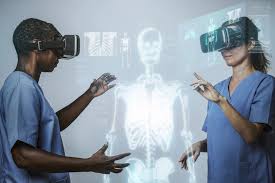Virtual reality, or VR—whatever you choose to call it—is a well-known concept in today’s world. Most people recognize it as the technology involving goggles that immerse users into entirely new environments, often of their choosing.
VR is widely used for gaming, offering an experience far beyond traditional consoles. Instead of just pressing buttons on a controller, you can move your hands freely and interact with the virtual world, making the experience feel much more real.
But VR has expanded far beyond just entertainment. It’s now being used in areas like medical procedures and training. These advancements are exciting, but that doesn’t mean VR is without its drawbacks.
As many VR users know, injuries are a real concern. Imagine playing a game, quickly reaching for something, and suddenly slamming your hand into a wall or piece of furniture. It’s not just the controller that can get damaged—people have broken fingers, hands, or worse. Between 2017 and 2021, over 1,300 VR-related injuries resulted in emergency room visits—and that number likely doesn’t include the less serious ones.
Still, despite the risks, VR remains a valuable tool. It’s used for fitness, therapy, and medical simulations, and continues to grow in usefulness and popularity.
In my opinion, the benefits of VR outweigh the risks. Yes, there’s a chance of getting hurt, but its positive impact on health, learning, and entertainment makes it worth it.
In conclusion, virtual reality is a powerful and evolving technology. Whether it’s being used for surgery training, physical therapy, or just for fun, VR is shaping the future in exciting ways.
































